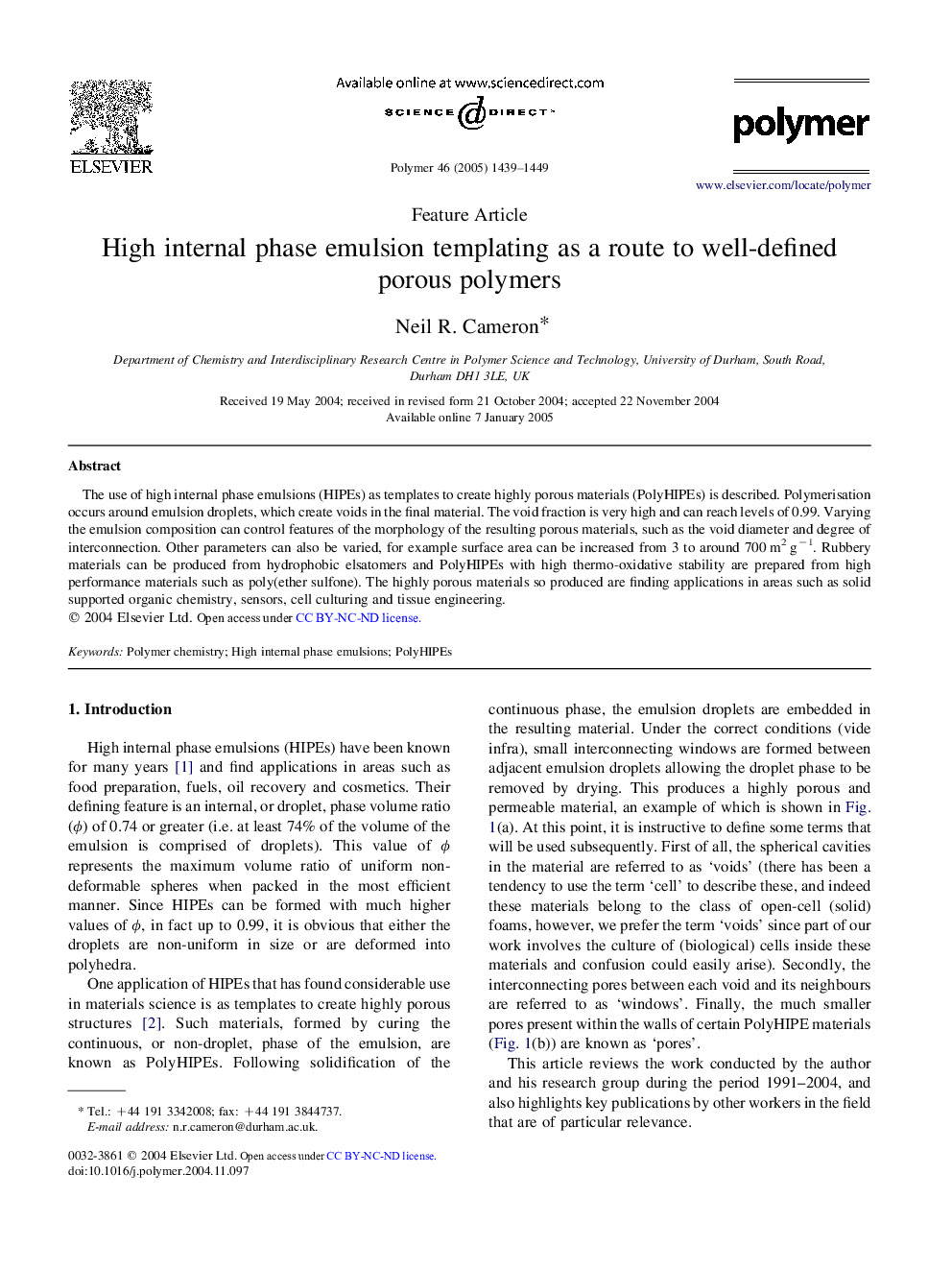| Article ID | Journal | Published Year | Pages | File Type |
|---|---|---|---|---|
| 9559224 | Polymer | 2005 | 11 Pages |
Abstract
The use of high internal phase emulsions (HIPEs) as templates to create highly porous materials (PolyHIPEs) is described. Polymerisation occurs around emulsion droplets, which create voids in the final material. The void fraction is very high and can reach levels of 0.99. Varying the emulsion composition can control features of the morphology of the resulting porous materials, such as the void diameter and degree of interconnection. Other parameters can also be varied, for example surface area can be increased from 3 to around 700Â m2Â gâ1. Rubbery materials can be produced from hydrophobic elsatomers and PolyHIPEs with high thermo-oxidative stability are prepared from high performance materials such as poly(ether sulfone). The highly porous materials so produced are finding applications in areas such as solid supported organic chemistry, sensors, cell culturing and tissue engineering.
Related Topics
Physical Sciences and Engineering
Chemistry
Organic Chemistry
Authors
Neil R. Cameron,
